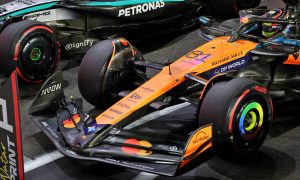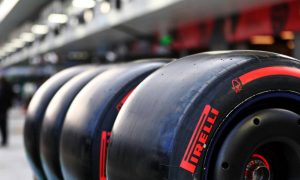
Simulation data gathered recently by Pirelli is pointing to faster laps times next season, with gains estimated at over 2 seconds a lap by the tyre manufacturer.
The introduction this year of F1's new regulation, with wider tyres and increased downforce, shaved approximately five seconds off the average 2015 lap time.
The trend in decreasing lap times is projectedto continue, according to Pirelli's Mario Isola.
"At the beginning of next year they should be quicker by one second per lap, and during a year the normal rate of development is 1 – 1.5 seconds," contends the tyre manufacturer's car racing boss.
"So by the end of next year they should be quicker by two seconds per lap."
Pirelli's full range of rubber has gone one step softer for next season, culminating with new the pink rimmed hypersoft compound.
It remains to be seen however how often the new tyre will be used, with the compound excluded from Pirelli's recent selection of tyres for the first three races of 2018.
"If we go softer with the tyres, the cars could be ever quicker," Isola says.
"But we have to remember that there is an additional weight with the Halo, and that will cost about three to four tenths of a second, because of the weight plus aero implications."
Constraints linked to the mounting of the Halo in 2018 and the mandatory loads its must sustain forced the FIA to raise the minimum weight limit of next year's cars by 6kgs.
But some teams are projecting a Halo-induced increase of up to 14kgs, with 10kgs estimated to be worth about 0.3 seconds a lap.
Gallery: The beautiful wives and girlfriends of F1 drivers
Keep up to date with all the F1 news via Facebook and Twitter






